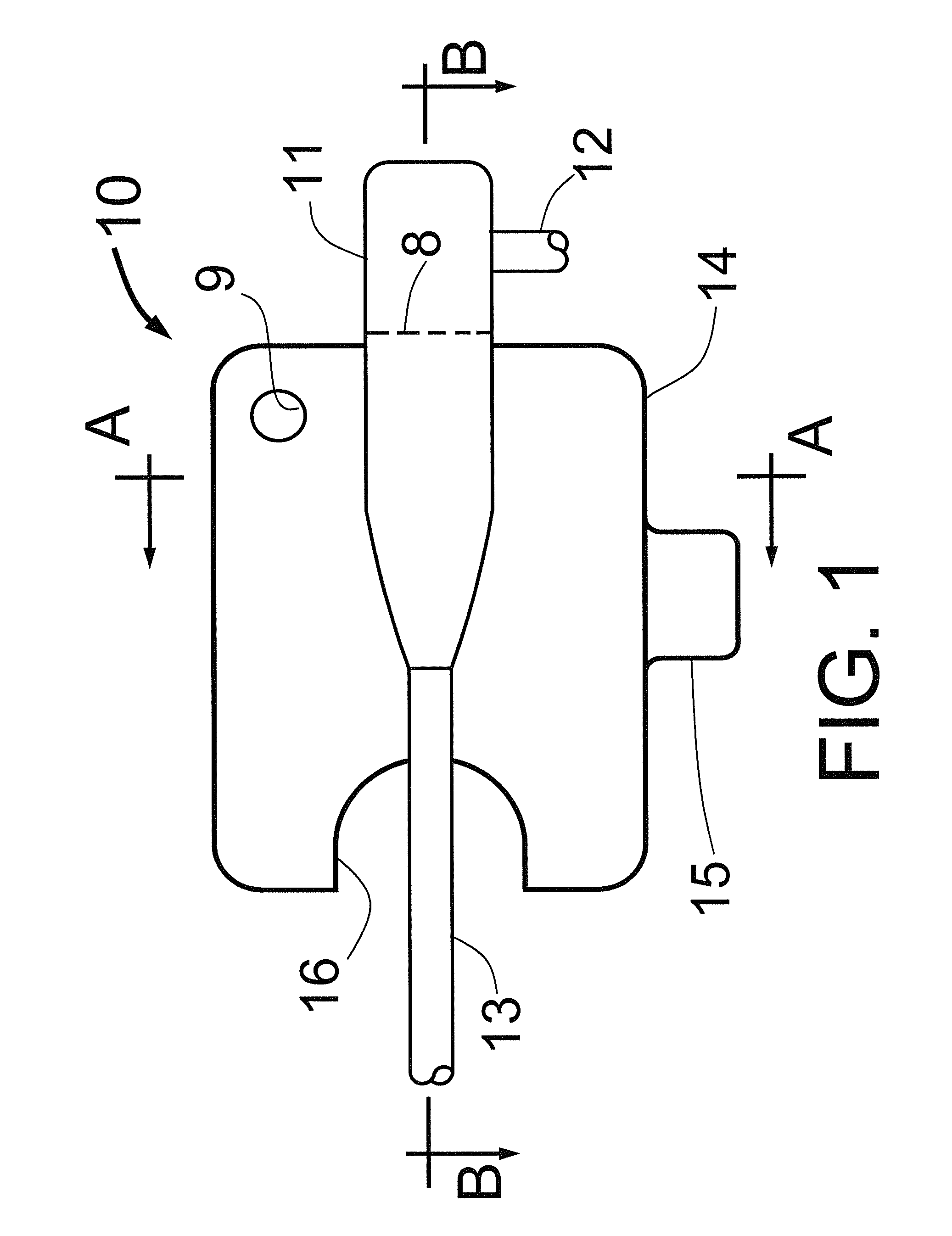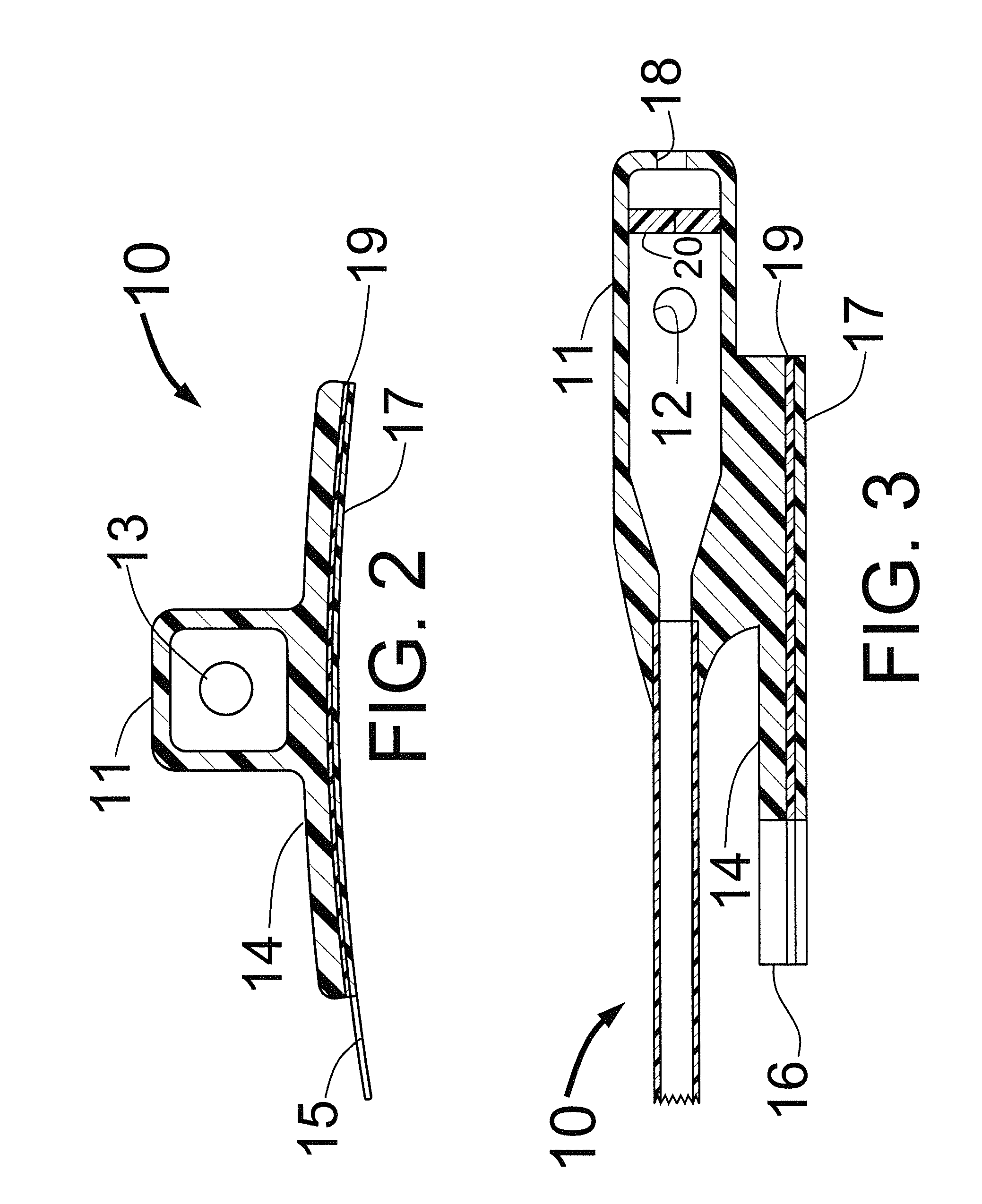Introducer sheath having a hemostasis valve with an adhesive means for attachment to the skin
a technology of hemostasis valve and inserting sheath, which is applied in the direction of intravenous devices, catheters, infusion needles, etc., can solve the problems of hemostasis valve slipping off the inserting sheath, requiring about 2 minutes of suturing time for the operator, and requiring another 2 minutes to remove the suture, etc., to achieve the effect of facilitating rapid attachment and detachmen
- Summary
- Abstract
- Description
- Claims
- Application Information
AI Technical Summary
Benefits of technology
Problems solved by technology
Method used
Image
Examples
Embodiment Construction
[0015]FIG. 1 is a top view of the present invention showing a proximal portion of an introducer sheath 10 that has a hemostasis valve 11 located at the sheath's proximal end. The hemostasis valve 11 has a side tubing 12 that is used to flush the sheath with normal saline solution and to inject various medications as needed to treat the patient. At the distal end of the hemostasis valve 11 is the shaft 13 that is placed into the patient's vascular system for introducing various catheters. Formed integral with the shell of the hemostasis valve 11 is a flexible pad 14 onto which is formed a thin layer of pressure sensitive adhesive 19 as shown in FIGS. 2 and 3. A tab 15 is used to remove a thin plastic covering 17 from the adhesive layer 19 immediately before the flexible pad 14 is pushed against the skin to secure the introducer sheath 10 to the patient's skin. Also shown in FIG. 1 is a suture hole 9 that can be used by the interventional cardiologist to place a suture through the fle...
PUM
 Login to View More
Login to View More Abstract
Description
Claims
Application Information
 Login to View More
Login to View More - R&D
- Intellectual Property
- Life Sciences
- Materials
- Tech Scout
- Unparalleled Data Quality
- Higher Quality Content
- 60% Fewer Hallucinations
Browse by: Latest US Patents, China's latest patents, Technical Efficacy Thesaurus, Application Domain, Technology Topic, Popular Technical Reports.
© 2025 PatSnap. All rights reserved.Legal|Privacy policy|Modern Slavery Act Transparency Statement|Sitemap|About US| Contact US: help@patsnap.com



